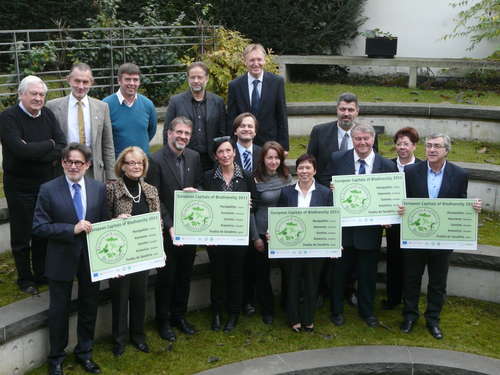This afternoon, I participated in a workshop that debated how local and sub-national authorities can help to achieve the Aichi targets. This was a true “One Programme” event, where all parts of the Union came together. The event was chaired by one of our Councilors, Christophe Lefèbvre, and the first presentation was by the Secretariat of the Convention on Biological Diversity. After an introduction by me, describing the activities in this field carried out by the IUCN Secretariat in Europe, The European Deputy Chair of the IUCN WCPA specialist group on urban biodiversity introduced the work they are doing. One of his announcements was the preparation of the WCPA best practice guidelines on urban protected areas that will be launched in 2013.
Next, IUCN International NGO Member ICLEI described the various activities it is involved in, and reflected on several joint projects it is carrying out in partnership with different parts of IUCN. Finally, the IUCN National Committee in France described the various guidelines they have prepared, in collaboration with local Commission experts and Members in France. I was very pleased to note that the Secretariat, Commission, National Committee and International NGO Member all work in synergy.
We talked about several of the past and ongoing activities, including Local action for Biodiversity; the URBES project; TEEB for local policy makers; and European Capitals of Biodiversity. The photo below was taken during the last award ceremony of the European Capitals for Biodiversity earlier this year with EC Commission Potocnik in Brussels.
In the discussion with the audience, we reflected on the role of local authorities in the implementation of the Aichi targets, and mentioned in particular the need for local authorities to deal with Invasive Alien Species (IAS).
I explained that IUCN is working with the Council of Europe to develop voluntary Codes of Conduct for IAS in several situations, and that the European Commission has received IUCN support in the process of finalising its new IAS regulation, which is expected to be launched in 2013. The technical support from IUCN is channelled through the Species Survival Commission Invasive Alien Specialist Group, which includes experts from the European and Mediterranean Plant Protection Organisation – EPPO. EPPO is carrying out awareness raising activities, and helping local authorities in Europe to interpret the codes of conduct.
I am in touch with all these key players, and will make a concerted effort to link the various initiatives. I hope that IUCN Europe can take the lead in the development of an integrated strategy for IAS in local autorities in Europe.


0 comments
Write a comment